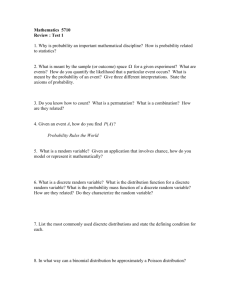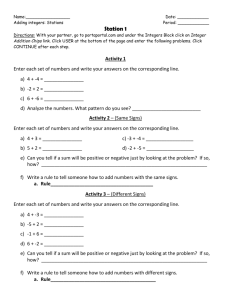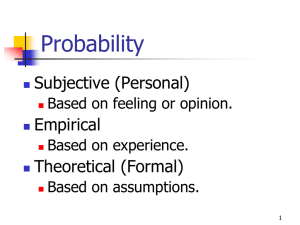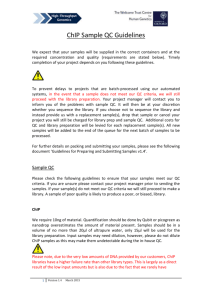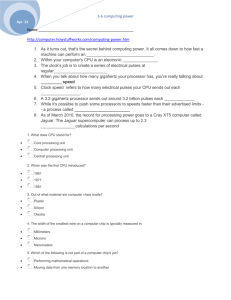Review 1 - Department of Mathematics and Statistics
advertisement
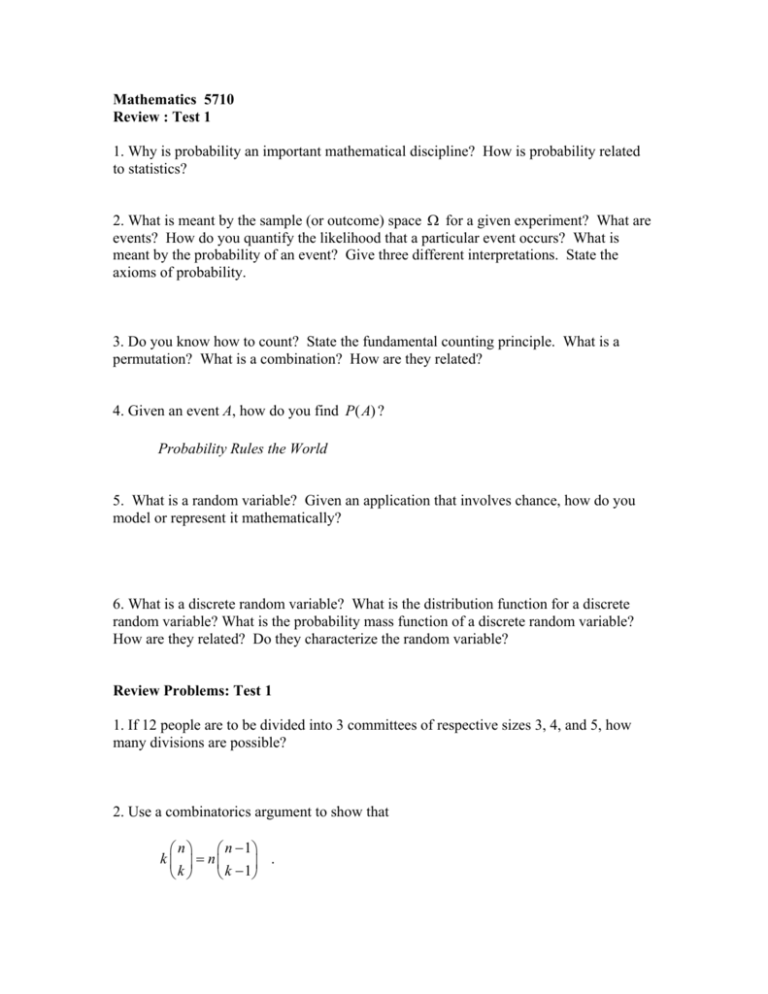
Mathematics 5710 Review : Test 1 1. Why is probability an important mathematical discipline? How is probability related to statistics? 2. What is meant by the sample (or outcome) space for a given experiment? What are events? How do you quantify the likelihood that a particular event occurs? What is meant by the probability of an event? Give three different interpretations. State the axioms of probability. 3. Do you know how to count? State the fundamental counting principle. What is a permutation? What is a combination? How are they related? 4. Given an event A, how do you find P( A) ? Probability Rules the World 5. What is a random variable? Given an application that involves chance, how do you model or represent it mathematically? 6. What is a discrete random variable? What is the distribution function for a discrete random variable? What is the probability mass function of a discrete random variable? How are they related? Do they characterize the random variable? Review Problems: Test 1 1. If 12 people are to be divided into 3 committees of respective sizes 3, 4, and 5, how many divisions are possible? 2. Use a combinatorics argument to show that n n 1 k n . k k 1 3. Let E, F, and G be three events. Find symbolic expressions representing a) At least one of the events occurs. b) Exactly two of the events occur. c) At least two of the events occur. 4. Two dice are tossed n times in succession. Compute the probability that “snake eyes” appears at least once. How large must n be to make this probability at least 3/4 ? 5. Suppose that a particular cancer diagnostic test is 99 percent accurate on those that do have cancer and 90 percent accurate on those that do not have the disease. If 0.2 percent of the population have this type of cancer, compute the probability that a tested person has cancer, given that his or her test result indicates so. 6. Suppose that a hand of 7 cards is dealt (without replacement) from a well-shuffled standard 52 card deck. The order in which you hold your cards does not matter. What is the probability of two triples: exactly 3 cards of one face value, 3 cards of another face value, and 1 card of still another face value? 7. A box contains five balls, one marked WIN and four marked LOSE. You and another player take turns selecting a ball from the urn, one at a time. The first person to select the WIN ball is the winner. If you draw first, find the probability that you will win if the sampling is done with replacement. 8. A bin of 50 electrical components is known to contain 3 that are defective. If the components are to be tested one at a time, in random order, until the defectives are discovered, find the probability that the defectives are discovered on the sixth test. 9. A pair of dice is rolled until a "seven" or "eleven" appears. What is the probability that a "seven" occurs first? 10. Box A contains two red chips and one white chip; box B contains two white chips; and box C contains one red chip and one white chip. A box is selected at random (with equal probabilities), and one chip is taken at random from that box. a) Find the probability of selecting a white chip. b) If the chip selected is white, find the probability that the chip came from box A. 11. A coin is biased with probability 3/4 for "heads" and 1/4 for "tails". You toss this coin until you get “heads”. Find the probability that the number of tosses is even. 12. In many multiple choice tests there is a penalty for guessing. Suppose a test has 25 multiple choice questions (a,b,c,d, or e with exactly one of them correct). You get 4 points for each correct answer and lose 2 points for every incorrect answer. Being totally unprepared, you decide to guess on every question. Find the probability of getting 70 or more points on the exam. 13. Deron Williams makes 80% of his free throws. In a playoff game, what is the probability that he makes his first free throw on his sixth attempt? What is the probability that he makes his fifth free throw on his tenth attempt? 14. From a panel of prospective jurors, 12 are selected at random. If there are 100 men and 125 women on the panel, what is the probability that 8 or more of the jurors are women? 15. Each component of the following system works independently with probability p. Find the probability that the system works.
